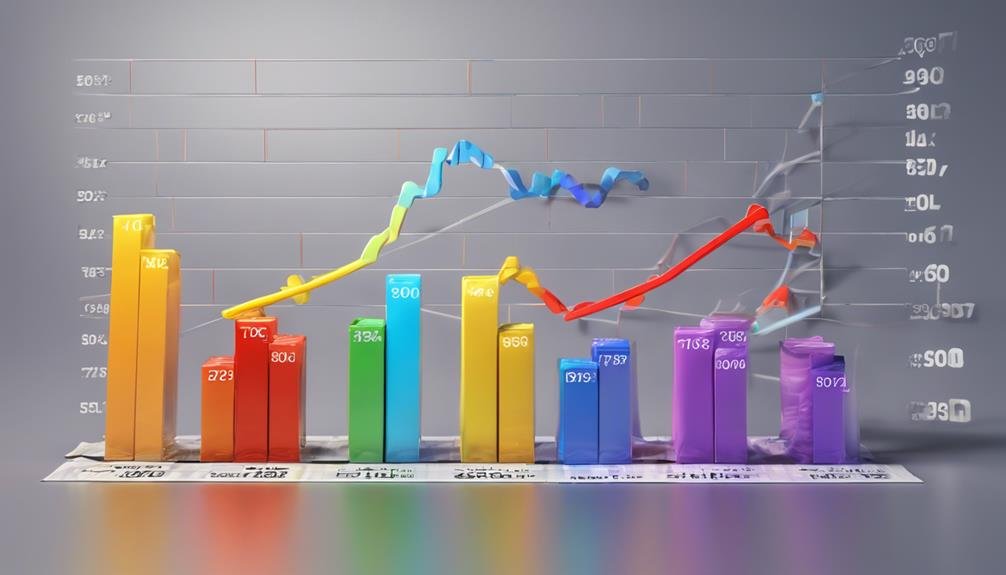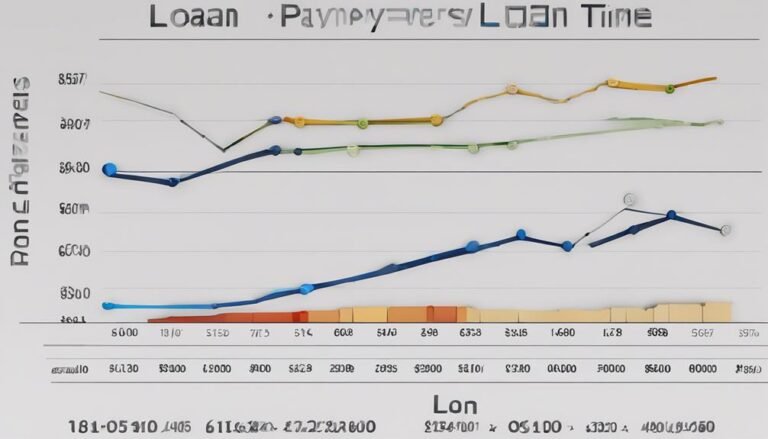Consumer Price Index (CPI): What It Is and How Its Used
The Consumer Price Index (CPI) is an essential economic indicator used to understand price fluctuations and assess price stability. It plays a significant role in measuring inflation and is important for policymakers, investors, and analysts. By utilizing weighted averages and reflecting consumer spending patterns, CPI offers valuable insights into economic trends. This data informs strategic decisions, shapes monetary policies, and influences setting inflation targets. Additionally, CPI impacts financial markets by influencing stock prices, interest rates, and market sentiment. In the labor market, it evaluates wage dynamics, affecting labor conditions and employment trends, reflecting changes in the cost of living.
Key Takeaways
- CPI is a crucial economic indicator for evaluating price stability and inflationary pressures.
- It uses weighted averages to reflect consumer spending patterns and includes various goods and services.
- CPI guides economic policy, shapes monetary decisions, and influences inflation targeting strategies.
- It impacts financial markets by affecting stock prices, interest rates, and market sentiment.
- CPI's significance in the labor market is seen through its influence on wage dynamics and employment trends.
Importance of Consumer Price Index
The Consumer Price Index (CPI) is an essential economic indicator that provides valuable insights into the changes in prices paid by consumers in the United States on a monthly basis. It plays an important role in evaluating price stability and serves as one of the key economic indicators used by policymakers, investors, and analysts to gauge inflationary pressures within the economy.
Calculation Methodology of CPI
Utilizing a weighted average approach, the calculation methodology of the Consumer Price Index (CPI) integrates price data for a diverse range of goods and services to assess monthly changes in consumer spending patterns.
- Weighted Averages: CPI calculation uses weighted averages to reflect the importance of different items in the consumer's basket.
- Price Basket Variations: The price basket includes various goods and services and is updated regularly to reflect consumer preferences.
- Market Price Data: Price data is collected from thousands of retail and service establishments to guarantee a thorough representation.
- Monthly Assessment: CPI is calculated monthly to provide timely insights into inflation trends based on the changing prices of goods and services in the market.
Utilization in Economic Policy
Economic policymakers leverage Consumer Price Index (CPI) data to gauge inflation trends and inform strategic decisions impacting monetary and fiscal policies. CPI plays an important role in shaping monetary policy by providing insights into inflation rates, which are essential for central banks like the Federal Reserve in setting inflation targets.
The Federal Reserve, for instance, often aims for a target inflation rate of 2% as part of its inflation targeting framework. By monitoring CPI data, policymakers can adjust interest rates to control inflation and stabilize the economy.
This utilization of CPI in economic policy underscores its significance in informing decisions that influence the broader financial landscape and the effectiveness of monetary policy interventions.
Influence on Financial Markets
Leveraging Consumer Price Index (CPI) data, particularly its insights into inflation trends and monetary policy implications, extends beyond economic policymaking to greatly impact financial markets. The CPI plays a significant role in shaping market dynamics, influencing various aspects within the financial domain.
- Stock Prices: Fluctuations in CPI data can lead to shifts in stock prices as investors interpret the inflation outlook.
- Interest Rates: Changes in CPI figures can prompt central banks to adjust interest rates, impacting borrowing costs and investment decisions.
- Market Sentiment: CPI data releases can create volatility in financial markets, reflecting investor sentiment and expectations.
- Monetary Policy: Central banks closely monitor CPI trends to make informed decisions on monetary policy, affecting market liquidity and stability.
The interplay between CPI data and financial markets underscores the importance of understanding inflation dynamics in investment strategies and economic analysis.
Significance in Labor Market
The Consumer Price Index (CPI) serves as an essential metric in evaluating wage dynamics and labor market conditions. In the labor market, CPI data plays a critical role in influencing wage negotiations between employers and employees. As the CPI reflects changes in the cost of living, it provides valuable insights into the purchasing power of wages.
Additionally, fluctuations in the CPI can impact employment trends by influencing labor market dynamics. For instance, when the CPI rises, employers may face pressure to increase wages to maintain employee purchasing power, potentially leading to changes in employment levels. Understanding the CPI's significance in the labor market is vital for policymakers, businesses, and workers to make informed decisions regarding wages and employment.
Conclusion
To sum up, the Consumer Price Index (CPI) stands as a cornerstone of economic analysis, providing invaluable insights into inflation trends, informing policy decisions, and shaping market dynamics. Its meticulous calculation methodology, widespread utilization across sectors, and profound impact on consumer purchasing power underscore its significance in the economic landscape.
As the CPI continues to steer financial markets, labor dynamics, and government policies, its influence remains paramount in maneuvering through the complexities of the modern economy with a hint of satirical sophistication.







